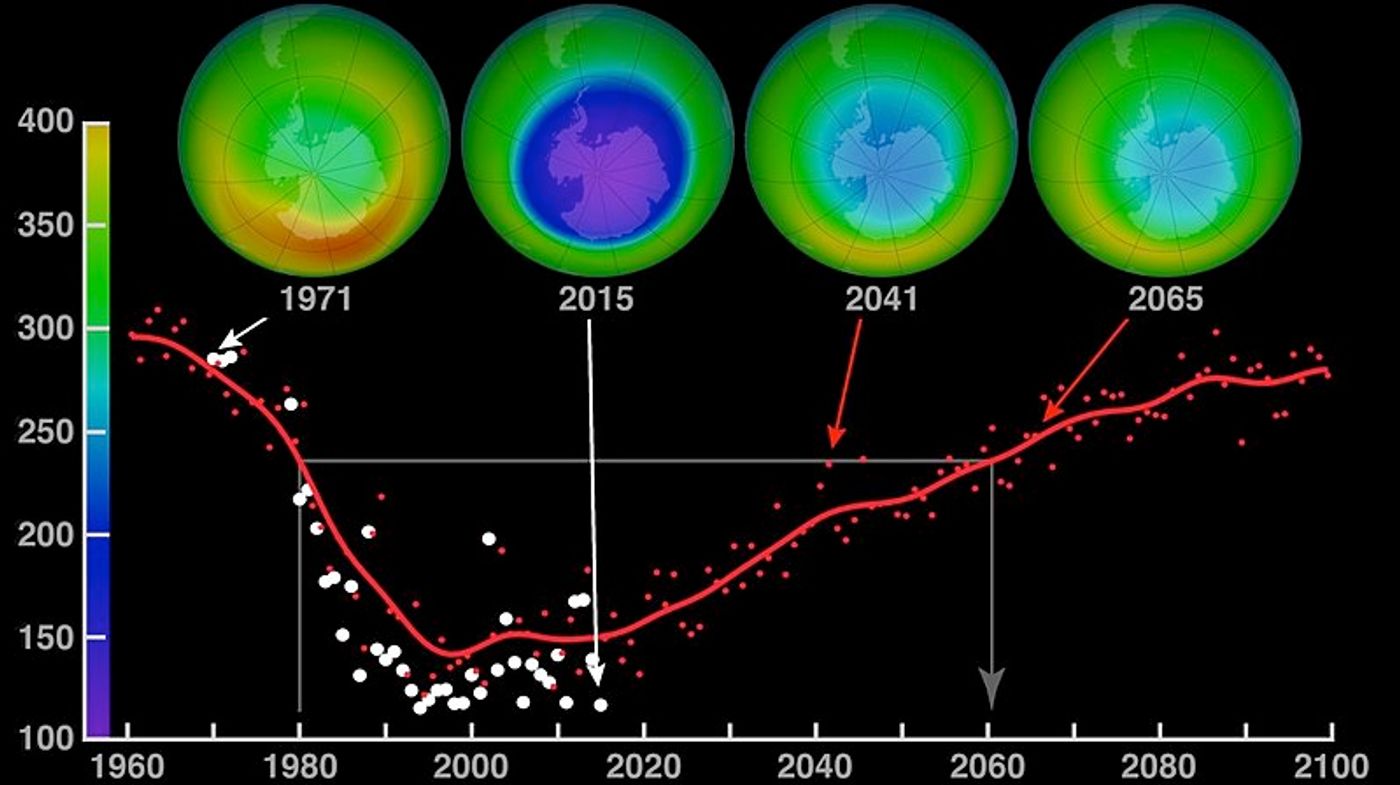Does Climate Change Increase Skin Cancer Risk?
As the climate changes and global temperatures rise, will more people get skin cancer? Probably, but the answer is complex and still under-investigation. Much of the answer is tied to the state of our ozone layer, which serves as an atmospheric shield that absorbs ultraviolet (UV) radiation from the sun, including the most harmful UVB rays. Exposure to this kind of radiation can cause non-melanoma skin cancer and is linked to increased risk of melanoma. The Word Health Organization (WHO) predicts that ozone depletion will lead to a rise in skin cancers over the coming decades.
Ozone depletion has multiple causes that are still being studied, including the presence of human-made chemicals like chlorofluorocarbons (CFCs), which are banned but still in use. Water vapor in certain layers of the atmosphere can also deplete the ozone layer. This is tied to several causes as well, such as extreme weather events and the movements of greenhouse gases like carbon dioxide (CO2) and methane. The connections between climate change, ozone depletion and related skin cancer rates are complicated -- we will look at a few briefly below.
Extreme Storms, Vapor in the Stratosphere and Ozone Depletion
One of the ways climate change can potentially influence rates of skin cancer is by affecting the ozone layer and allowing more UV radiation to reach the earth's surface. Global climate change occurs in the troposphere -- the layer of the atmosphere closest to the earth -- but it can also affect the ozone layer in the stratosphere above. For example, climate change and global warming have been shown to fuel extreme weather, which can send water and heat high into the stratosphere and destabilize the ozone layer, according to James Anderson, an atmospheric chemist at Harvard University.
In 2012, Anderson and his colleagues found that powerful thunderstorms are injecting water vapor way up into the stratosphere, which sets off chemical reactions that transform ozone into oxygen and deplete this protective layer. This phenomenon, in which water vapor plays a role in breaking down the ozone layer, was previously observed above the Arctic. The discovery that it occurs at warmer temperatures is described as “troubling” by Anderson. He says their research connects “climate change with ozone depletion, and ozone loss is directly tied to increases in skin cancer incidence, because more ultraviolet radiation is penetrating the atmosphere."A NASA model indicates water vapor accounts for about 40 percent of ozone loss in the upper stratosphere and about 20 percent of overall loss.
NASA also explains greenhouse gases can increase moisture in the stratosphere, as well. They have complex effects on the temperature and humidity of various layers of the atmosphere. Methane is directly transformed into water in the stratosphere. Methane and other greenhouse gases like CO2 may also enhance the movement of moist air up into the stratosphere. NASA states human activities and the production of these gases are “at least partially” to blame for the increase in water vapor in the stratosphere. “Because rising greenhouse gas emissions account for all or part of [this] increase, it is likely to continue for many decades,” NASA’s Goddard Institute for Space Studies stated in 2001. Because this increase in stratosphere moisture harms the ozone layer, it points to many years of increased UV radiation and potential skin damage.
Ozone-Depleting Chemicals Are Still Being Used
The Montreal Protocol of 1987 led to the phasing out of major ozone-destroying gases like CFCs and the subsequent healing of the ozone layer. With strict adherence to protocols, the Environmental Protection Agency (EPA) estimated the layer could recover by 2065.
But a 2018 study reports emissions of the banned ozone-depleting chemical trichlorofluoromethane (CFC-11) are actually increasing and undermining the ozone repair process. While production of this once common insulation foaming agent was supposed to have stopped in 2010, its use continues and is believed to originate in East Asia.
"We're raising a flag to the global community to say, 'This is what's going on, and it is taking us away from timely recovery from ozone depletion,'" NOAA scientist and lead author Stephen Montzka said.
The most common forms of skin cancer in the U.S., basal cell and squamous cell skin cancers, are usually treatable. Melanoma only accounts for 1 percent of skin cancers, but causes most related deaths. One in five Americans will currently likely develop skin cancer in their lifetime, according to the to the American Cancer Society. People with fairer skin are usually at greater risk. Relying on ozone modelling, the WHO predicts the U.S. population will experience a 10 percent increase in skin cancers by about 2050.
Climate change and ozone depletion are complex, related processes. While their connections are still under examination, many human-powered (and alterable) factors converge in their co-occurrence. These include the use of CFCs and the production of the greenhouse gases that cause global warming, fuel extreme weather and send moisture higher upward, harming the ozone layer and thus leading to an increase in skin cancer risk.
Sources: WHO, NASA, EurekAlert










